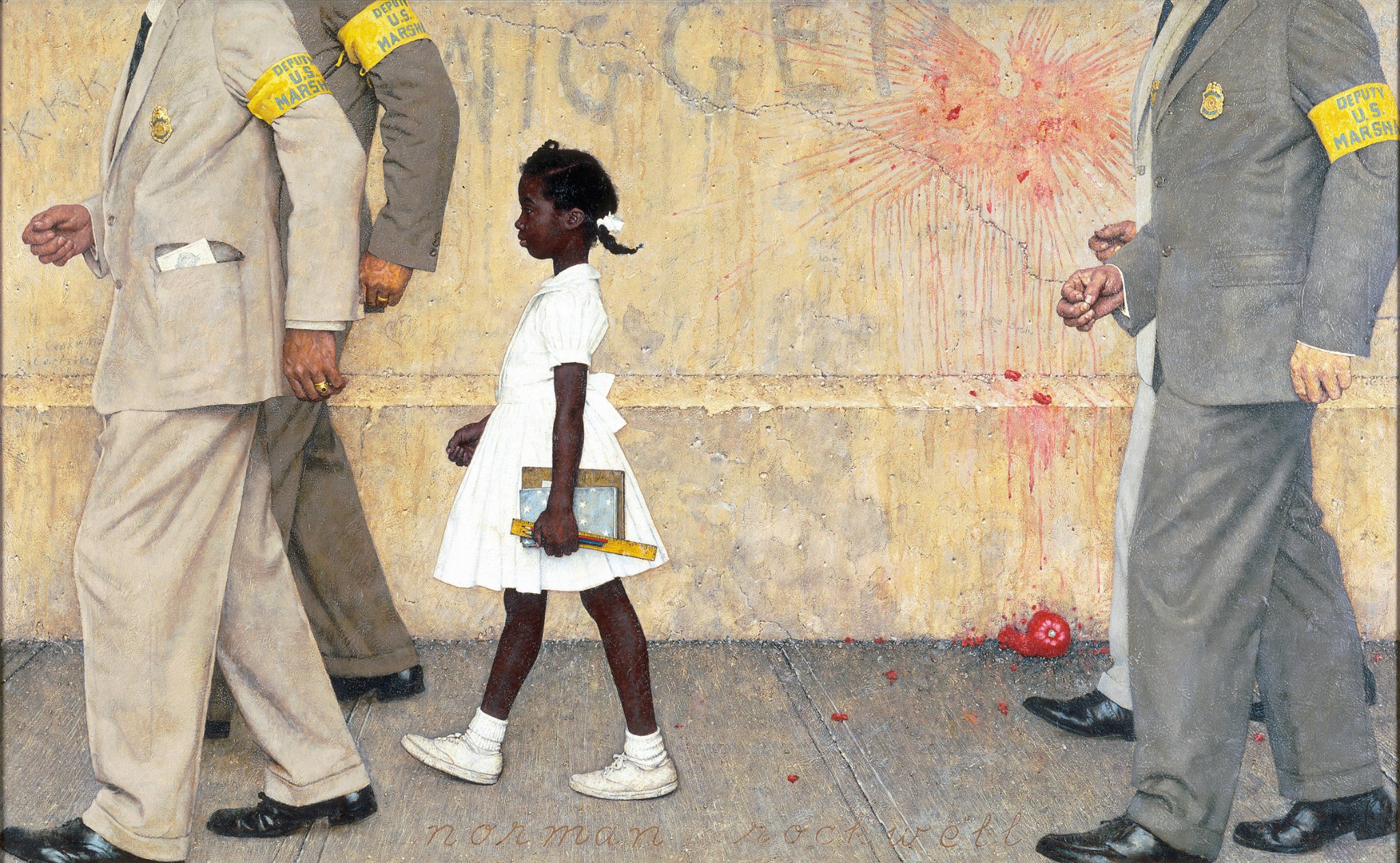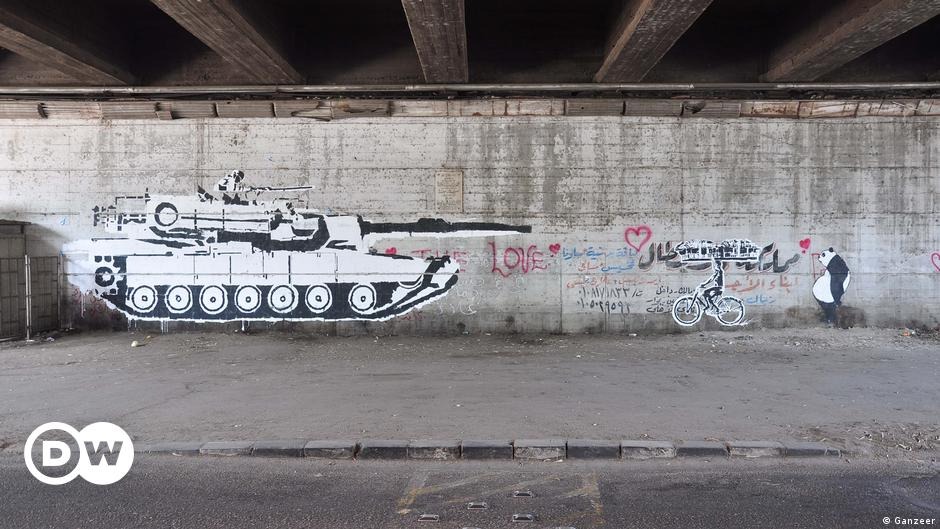The Socio-political Impact of Art
Art has long been a powerful tool for socio-political commentary and change.
Historically, it has served dual roles: as a means for governance and as a medium for dissent. For example, the propagandistic art of totalitarian regimes often stood in stark contrast to the poignant works of protest artists. A notable instance is the use of art during the Civil Rights Movement in the United States, where artists captured the spirit of the struggle and influenced public opinion.
Norman Rockwell, The Problem We All Live With
In contemporary times, the role of art in social movements has become increasingly prominent. Visual, performance art, and digital media have been pivotal in raising awareness and rallying support for various causes. The Arab Spring is a significant example, where graffiti and street art emerged as powerful tools for expressing dissent and fostering solidarity among the public.
Finally, the commercialization of art raises questions about its influence on artistic freedom and the authenticity of socio-political messages. The dynamics of the art market and corporate sponsorships can significantly impact how art is perceived and the messages it conveys, potentially diluting its effectiveness as a tool for social or political commentary.
In summary, the socio-political impact of art is multifaceted and profound, extending far beyond mere aesthetic appeal. It has the power to shape history, influence contemporary social discourse, and give voice to the marginalized, making it a vital player in the socio-political arena.
The interaction between art and political power also plays a critical role in shaping societal discourse. Governments and institutions have historically used their influence to support or censor art, affecting public perception and dialogue. The Cold War era witnessed art exchanges between the USSR and the USA, highlighting art's role in diplomacy and cultural understanding.
Art's representation of marginalized communities is another vital aspect of its socio-political impact. Movements like the Harlem Renaissance brought African American experiences into the mainstream art world, reshaping public perceptions and contributing to broader social and civil rights dialogues. This representation has been crucial in challenging stereotypes and advocating for social justice, giving voice to those often sidelined in mainstream narratives.


Post a comment